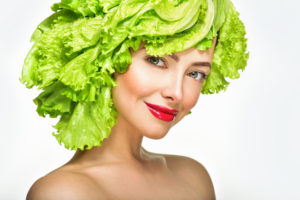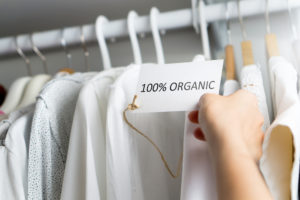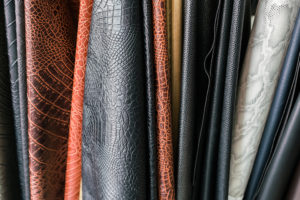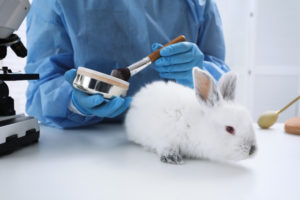Everything You Need to Know About Vegan Fashion

When we hear or see the word ‘veganism,’ we mostly think about diet. But did you know that veganism refers to a much broader concept? It involves living in a way that avoids exploiting and ill-treating animals – not just for food but also for clothing and beauty products.
Gone are the days when veganism was an outlandish idea you only read about in food magazines. A UK poll in May 2021 found that 95% of respondents wanted more vegan-verified options when it comes to fashion. Vegan fashion has become so popular that the inaugural Vegan Fashion Week took place in 2019 and was repeated in 2020 and 2021.
But what is vegan fashion? Is there a connection between vegan fashion and sustainable fashion? Does resorting to vegan fashion like PU/faux leather help the environment? Which companies and influencers are associated with vegan fashion? These are the questions we answer in this article.
What is Vegan Fashion?

Understanding the idea of vegan fashion is easier if you understand the general concept of veganism.
The Vegan Society is an educational charity providing information on different aspects of veganism. The organization defines veganism as “a philosophy and way of living which seeks to exclude—as far as is possible and practicable—all forms of exploitation of, and cruelty to, animals for food, clothing or any other purpose; and by extension, promotes the development and use of animal-free alternatives for the benefit of animals, humans and the environment.”
The website GreenLivingIdeas.com provides a simple definition of vegan fashion: “Vegan clothing is any garment made without animal products.”
Based on the definitions above, the idea of vegan fashion denotes clothes and other fashion accessories manufactured in a manner that avoids cruelty, exploitation, harming, or using animals.
It’s important to note that the concept of vegan fashion denotes a wide array of products. On one end of the spectrum are products made from purely synthetic materials, and on the other side are products made from natural plant materials.
The Connection between Vegan Fashion and Sustainable Fashion
For many people, vegan fashion and sustainable fashion concepts are synonymous. However, the two ideas are not quite the same.
The Vegan Fashion Week clarifies the difference between vegan fashion and sustainable fashions, as in that vegan fashion doesn’t use any animal products when creating fashion because the objective is to be 100% “cruelty-free.” Therefore, such fashion doesn’t involve using fur, leather, silk, wool, or other animal-based fibers.
On the other hand, the primary focus of sustainable fashion is reducing the environmental impact of clothing alone. According to Vegan Fashion Week, sustainable fashion involves “sourcing fibers that will biodegrade or have been recycled, and creating the smallest carbon footprint possible.”
Therefore, sustainable fashion still uses inputs from animals. In contrast, vegan fashion products contain absolutely no raw materials from animals or other products that involve harming animals.
And Cruelty-Free Fashion?
Apart from sustainable fashion and vegan fashion, there is also the idea of cruelty-free fashion. What is cruelty-free fashion, and how does it differ from the other two types of fashion?
Aja Barber writes for the British publication, TheGuardian.com, where she attempts to demystify the language of sustainable fashion. She writes, “Cruelty-free refers to animal welfare and whether any animals were hurt or harmed during the production of the garment.”
Barber adds that while cruelty-free in fashion denotes that the product doesn’t have any animal byproducts, for beauty products, it implies that the products were not tested on animals.
The online service listing vegan, vegetarian and healthy food sources, HappyCow.net, explains why people choose cruelty-free fashion: “Because animals are sentient beings with feelings – just like human animals have feelings. They, too, have the right to live their lives freely.”
Cruelty-free fashion is the same as vegan fashion because both emphasize fashion production that doesn’t involve harming animals or using raw materials derived from animals.
Alternatives to Animal-Based Fashion
For centuries we have relied on the exploitation of animals to produce fashion – to the extent that it seems impossible to even think about clothes and fashion accessories without connecting them to animals in one way or another.
However, the vegan fashion industry came up with alternative materials made from sources you could never imagine, like seaweed, wood, beech tree fiber, hemp, soybeans, and coconut fiber.
One of the most common vegan fashion raw materials is PU leather, also known as faux leather or synthetic leather. The PU abbreviation in this leather comes from the word polyurethane.
Let’s delve deeper to show how practical vegan fashion is.
 What is PU Leather/Faux Leather?
What is PU Leather/Faux Leather?
PU leather or faux leather denotes a material made from synthetic materials to mimic animal leather. This kind of leather was manufactured using mainly synthetic materials in the past. This is why some preferred to call it pleather, emphasizing the plastic in the material.
With advances in technology and research, modern PU leather or faux leather is progressively being called vegan leather since the material comprises more natural and organic ingredients.
Writing for the fashion, beauty, and lifestyle magazine, The VOU, Mandy Meyer identifies several sources of material used to produce vegan leather. These include byproducts of fruits, mushrooms, “cactus, algae (kelp), orange and apple peels, pineapple leaves (pinatex), cork, barkcloth, and even paper.”
Some people differentiate between PU leather and faux leather by noting that PU leather is mainly made from plastic materials. In contrast, faux leather comprises all other materials, including plastic, as long as they are not made from animal skin.
Advantages of PU Leather/Faux Leather
PU leather has become extremely popular over the years because of its several benefits:
- PU leather/faux leather provides a much cheaper alternative than genuine leather if you are on a budget.
- It’s easy to clean and maintain.
- It uses fewer resources and chemicals in the manufacturing process than genuine leather.
- For vegans, PU leather/faux leather is animal-friendly and cruelty-free.
- PU leather/faux leather does not require any land to be cleared to raise animals, as is the case with natural leather.
How Long Does PU Leather/Faux Leather Last?
One of the biggest concerns for people that want to avoid fashion made from animal products is the durability of alternative materials. Even though PU leather/faux leather is not as durable as natural leather, with reasonable care, it can last many years.
A Quora forum contributor asked, “What is the [life span] of PU leather?” Some of the contributors answering the question noted that PU leather comes in many varieties. They also indicated that the life span of a specific vegan fashion product depends on how well you look after it, suggesting that some could last up to ten years.
Does PU Leather/Faux Leather Help the Environment?
The adverse environmental effects of genuine leather are well documented. This is why some people opting for PU leather/faux leather want to know whether this material is more environmentally friendly when compared to genuine leather.
Writing for TheGoodTrade.com, Leah Thomas begins by saying that the answer is complicated. “When it comes to sustainability and the fashion industry, remember that it’s always nuanced.” She adds, “Think about your personal values and ethics when considering where you spend your money.”
Fashion made purely from synthetic materials tends to be less environmentally friendly when compared to fashion made from natural raw materials. Vegan leather is therefore considered the most environmentally-friendly compared to other types of leather.
Most Common Vegan Brands and Influencers
An article published by the American magazine that focuses on how emerging technologies impact the economy, politics, and culture, Wired.co.uk, lists some of the most popular brands pushing vegan fashion:
- Lefrik: Sells bags made from recycled plastics.
- Matt & Nat: A Canadian supplier of bags, belts, and footwear made from recycled windshield glass resin.
- Kula: Supplies vegan laptop bags made from paper.
- Finisterre: Even though the company is not 100% vegan, it does sell many vegan products.
- SAYE: Distributes vegan sneakers.
Many influencers also support vegan fashion. Lim Li Ying writes for the style magazine SCMP.com. She starts by noting, “Veganism has growing support from celebrities and a strong social media presence, attracting attention of big players and having impact in Asia.”
Li Ying lists some of the famous influencers behind the vegan fashion movement, including David Yeung, co-founder of Green Monday, Jodi Monelle, founder and CEO of LIVEKINDLY, and Klaus Mitchell, You Tuber and founder of Plant Based News.
Look At Fashion Holistically
Whether you decide to shop for vegan fashion, sustainable fashion, or fashion that uses animal products, the idea is to do so responsibly. For instance, Lucy Jones, writing for BBCEarth.com, suggests using fashion responsibly by consuming less, recycling and repairing.
Another way of ensuring that you play your part in protecting the environment is to always look for quality clothes that will last longer. Thomas agrees, “Just know—whatever informed decision you make is entirely up to you, and being conscious of the environment when (or if) you buy, is a step in the right direction.”

